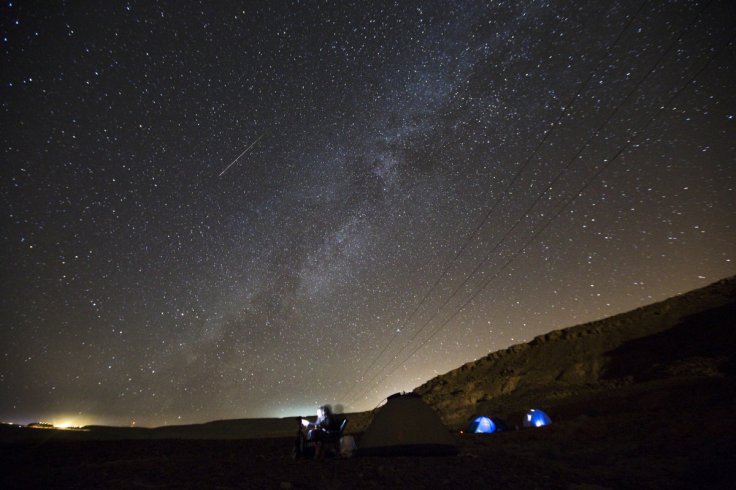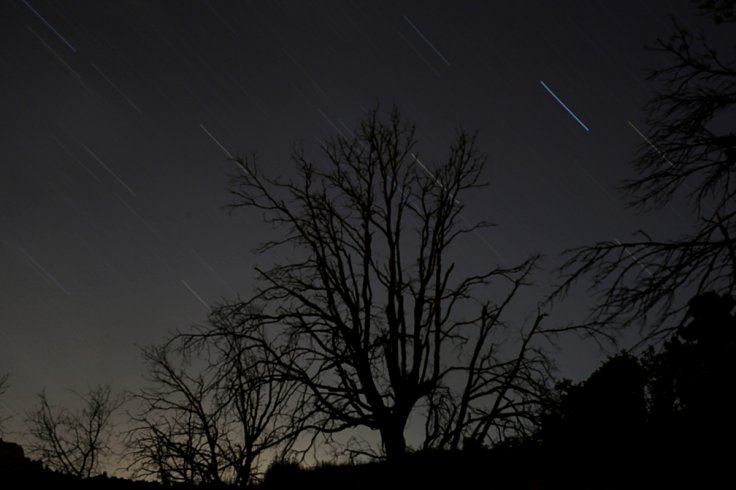This weekend marks the zenith of one of the most remarkable meteor showers of the year, presenting a spectacle of up to 100 shooting stars visible each hour. All those watching the night sky across the globe will have the chance to witness the Perseid meteor shower.
This meteor shower takes place as Earth moves through the remnants left by the Swift-Tuttle Comet during its trips through the inner solar system. Referred to as the 'fiery tears of Saint Lawrence', this spectacle will be visible in both the northern and southern hemispheres. However, those in the mid-northern latitudes will be treated to the best views and will witness a greater number of space rocks hurtling through the sky.
How to Watch Perseid

Astronomers suggest that for optimal viewing of the Perseid meteor shower, as is the case with all meteor showers, it's best to see it with the naked eye in regions characterized by clear skies, minimal light pollution, and limited smog. A vantage point with a broad expanse of the sky is also ideal for observation.
Before venturing out, it's advisable to begin by checking the weather forecast.
The quality of the meteor shower spectacle experienced during its peak is influenced by two main factors: the prevailing weather conditions and the moon's illumination.
Last year, the presence of the moon was a hindrance to viewing the meteor shower. However, this year is different since the lunar satellite will be at the last quarter phase on August 8 and a new moon on August 16. This means that the peak of the 2023 Perseids will not be affected by any moonlight interference.
However, the weather may pose a challenge depending on where you live.
Once you've identified a suitable night and location with relatively clear skies, your next step is to proceed to a location devoid of excessive ambient light.
Choose a spot that offers an unobstructed view of the horizon and steer clear of areas with trees and buildings.
It's worth noting that specialists advise against using binoculars or telescopes as they can narrow your field of vision, limiting the portion of the sky you can observe.

When and Where to Watch in USA and Canada
Forecasters say people in the US and Canada will have a good view this year, as long as the sky is clear of light pollution and clouds.
For this year's Perseid meteor shower, the Earth is projected to cross through the remains of the Swift-Tuttle comet at 4 am ET on Sunday, August 13. The shower will be visible from 10:30 pm to 4:30 am during that timeframe.
When and Where to Watch in UK, Scotland and Wales
Those in the UK can direct their gaze toward the night sky during the predawn hours of both Saturday, August 12 and Sunday, August 13. During these times, the meteor shower, comprised of remains from the comet, will manifest as swift flashes of light streaking across the sky in various directions. The shower will be visible from 10:30 pm to 5:30 am during that timeframe.
When and Where to Watch in Australia
In Australia, the visibility of the meteor shower might be somewhat limited, given our southern latitude. However, there is still a possibility of witnessing the spectacle. To maximize the chances of observing this ethereal spectacle, it's advisable to direct your gaze skyward during the early hours of Sunday, August 13, particularly around 3 am.
When and Where to Watch India
Even though the radiant point of the meteor shower is situated in the northeastern region of the sky, adjacent to the Perseus constellation, the meteors themselves can be observed streaking across the entire celestial expanse.
The radiant point will ascend around midnight and will be situated relatively close to the horizon. To obtain optimal views, it's recommended to observe the shower prior to dawn, with its peak projected at 01:28 am IST on Sunday, August 13.









